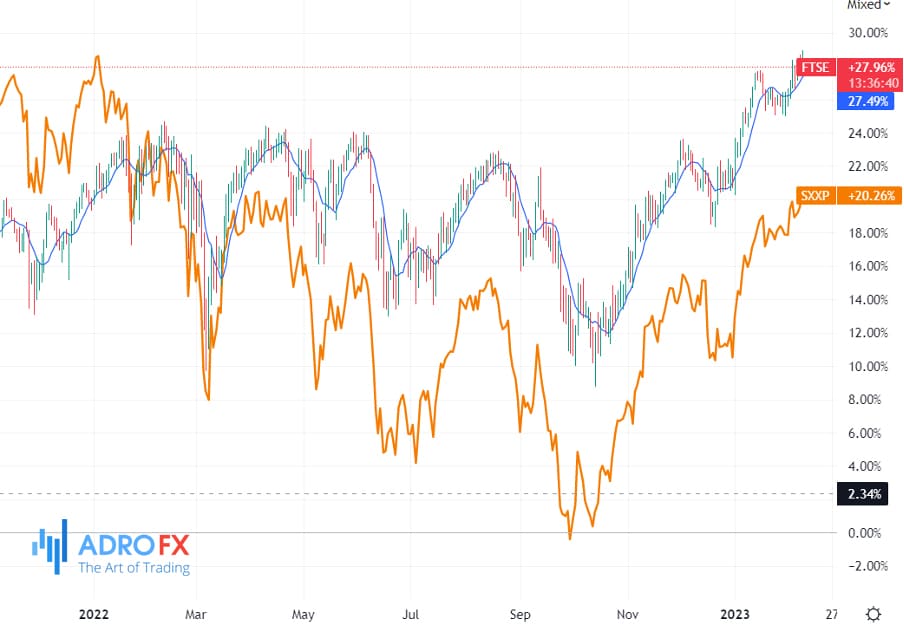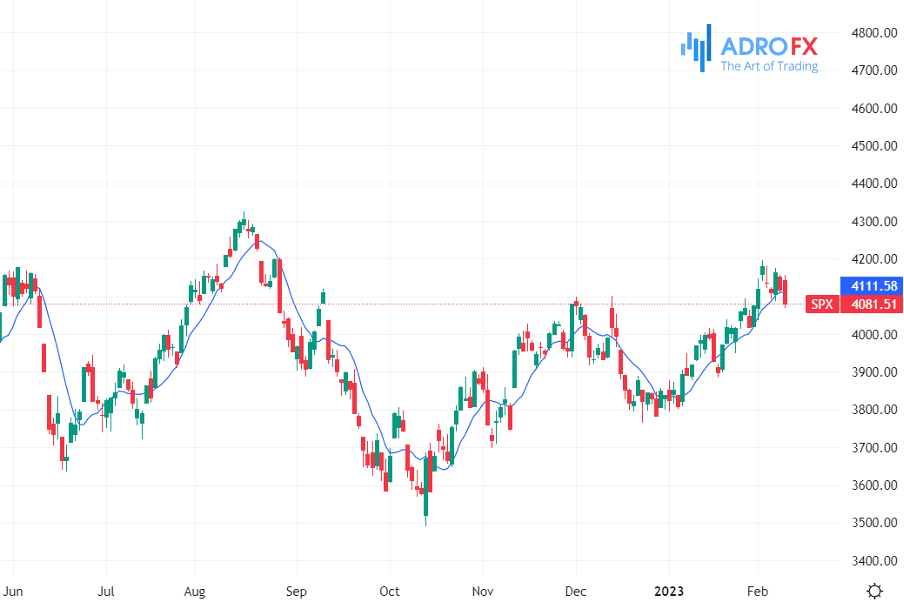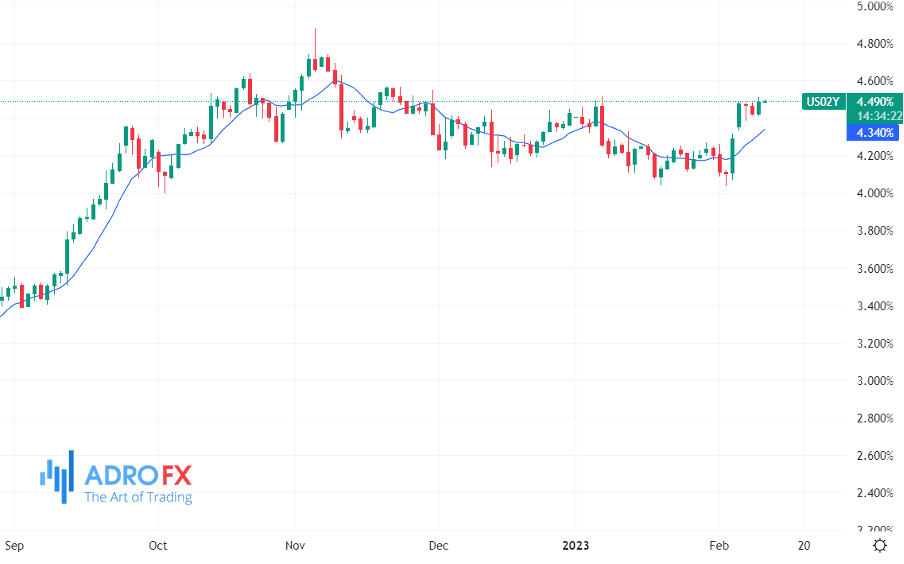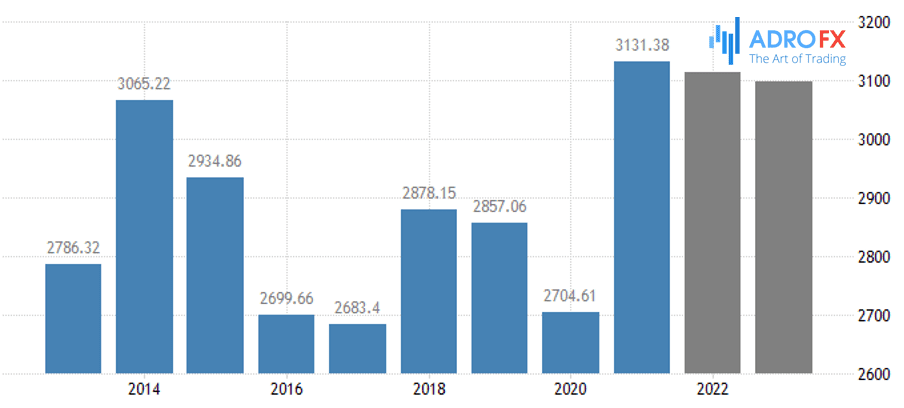US Markets Weaken Amid Rising Government Bond Yields | Daily Market Analysis

Key events:
- UK – GDP (MoM) (Dec)
- UK – GDP (YoY) (Q4)
- UK – GDP (QoQ) (Q4)
- UK – Manufacturing Production (MoM) (Dec)
- UK – Monthly GDP 3M/3M Change (Dec)
- Eurozone – EU Leaders Summit
- Canada – Employment Change (Jan)
Yesterday the FTSE 100 continued to show positive momentum and made a new record high. The level of 8,000 is still acting as a magnet for investor sentiment, and the market seems to just want to go higher.

It was also a positive day for other European markets as well, with the Stoxx600 index returning to the same levels where it was trading before the Russian invasion of Ukraine.
US markets, on the other hand, seem to have a harder time holding on to recent high levels. Despite a higher opening, they gradually moved to close and ended lower for the second day in a row, as U.S. yields continued to rise.
At the same time, traders note that the market has been trading in fairly tight ranges lately. For instance, this month S&P 500 has not climbed above 4,200 points and has not fallen below 4,000 points.

The two-year U.S. bond yield, which fell to a 4-month low just before last week's payrolls report, was above 4.5% yesterday for the first time this year, signaling a dramatic change in sentiment about future U.S. interest rate expectations. Last week the market was expecting rates to fall by the end of this year, and the terminal federal funds rate below 5%. Since then we have seen a significant reassessment of those expectations, with a number of Fed speakers indicating that rates will remain higher for several more months.

Consequently, European markets may open slightly lower this morning, and the focus today will be on whether the UK economy can avoid falling into the technical recession that the Bank of England and OBR believe we are already in.
After the UK economy contracted -0.3% in the third quarter, it was widely expected that today's fourth-quarter numbers would result in a similar contraction, officially putting the UK economy into recession.
The reason for the third-quarter contraction was largely due to a slowdown in economic activity in September due to the funeral of Queen Elizabeth II.
That slowdown led to a significant rebound in October, with monthly growth of 0.5%, followed by a 0.1% expansion in November, which belied expectations of a -0.1% decline.
The better-than-expected performance was helped by a robust services sector, as well as the Qatar World Cup, which led to good numbers in pubs and bars as people came out and supported England.
Industrial and manufacturing production disappointed in November and is expected to be the same in December, down -0.2% for both sectors.
Tour operators and booking services contributed positively to November GDP, up 3.7%, as people booked vacations for next year. Based on the fact that the World Cup ended on December 18 and England dropped out of the tournament on December 10, we could assume that we could have avoided a contraction in the fourth quarter and thus avoided the "R" word, even given the disruptive nature of the strike, which disrupted people's travel and shopping plans.
The latest retail data are encouraging that consumers are still spending, albeit more cautiously. According to the OBR and the Bank of England, the UK economy is already in recession, but as is often the case, could they both be wrong?
Whatever today's GDP numbers are, they are likely to be close to the truth, but with September's -0.8% decline to disappear from the rolling 3-month figures, the UK may avoid a technical recession, depending on how the economy performs in December, where a -0.3% decline in monthly GDP is expected.

Whatever the results of today's numbers, many people probably won't understand the nuances of them, given how strained things are with finances. All we know is that any growth is likely to be marginal, and 2023 is likely to be a very challenging year.







